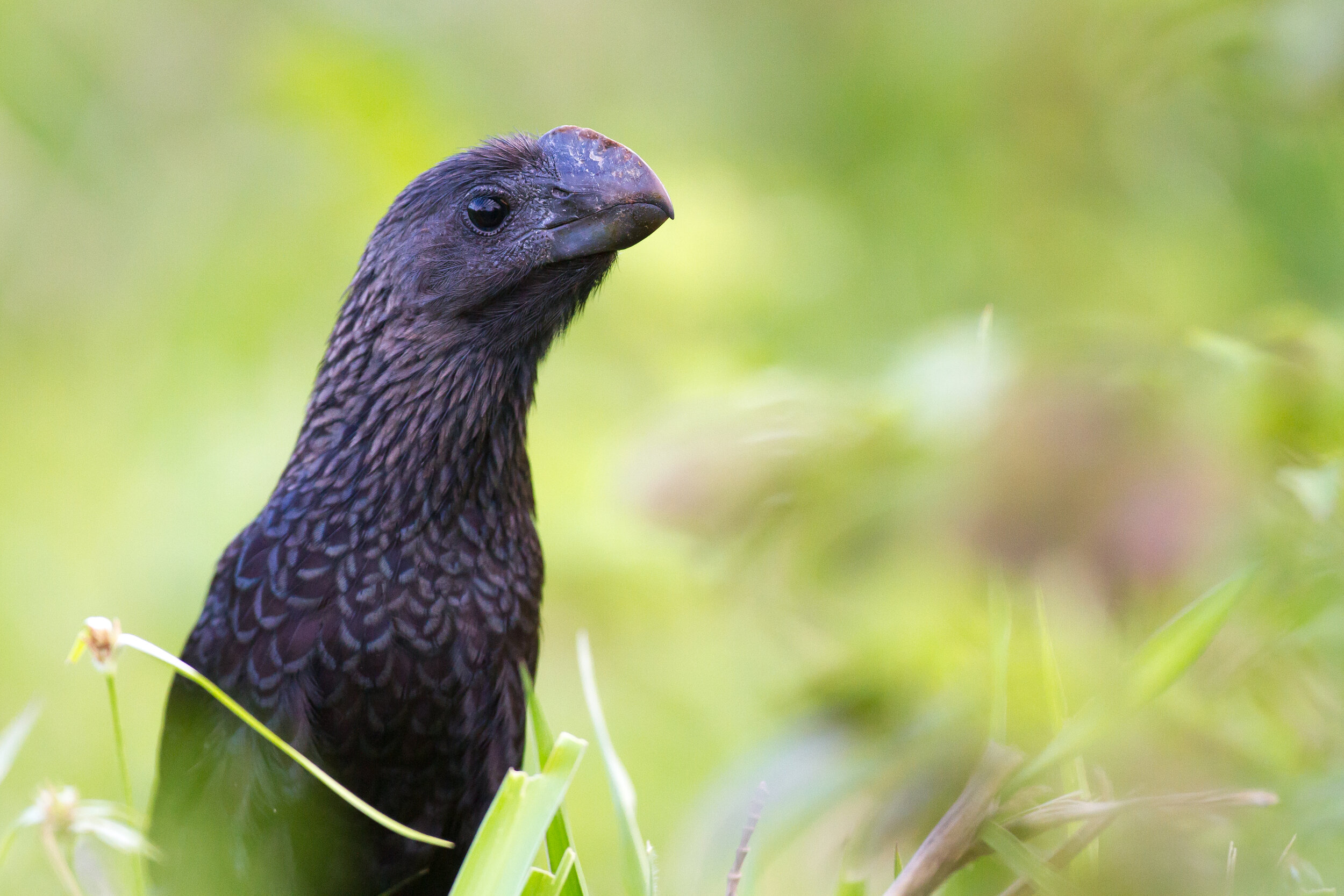
Using birds to understand how pollution impacts biodiversity
Chris Sayers
PhD Student
NSF Fellow & NASA Future Investigator
University of California, Los Angeles
I am a bird conservation biologist and ecotoxicologist — an "ecotoxic-ornithologist" — in the Tingley Lab at the University of California, Los Angeles, a National Science Foundation Graduate Research Fellow in Ecology, and a NASA Future Investigator in Earth Sciences.
While I am broadly interested in how human-induced drivers of global change impact biological diversity, I often focus on environmental pollution as a widely-neglected stressor with fatal consequences. As species attempt to adapt on a rapidly changing planet, it is critical to understand how pollution can influence various aspects of their life history: behavior, migration, reproduction, and survival.
I currently research how bird communities in Amazonia respond to mercury pollution, and other environmental disturbances caused by gold mining, with the intent to inform resource extraction and conservation decision making.
Education
BSc, Cornell University - 2020

Research
Disentangling the impacts of gold mining to biodiversity in the Amazon
A global surge in gold price is causing an ongoing gold rush in the most biodiverse place on Earth: the Amazon. Despite gold mining’s tremendous economic promise, we do not yet understand how the interacting environmental disturbances from this industry contribute to biodiversity loss. With the support of local collaborators, I am monitoring how bird communities respond to habitat degradation, pollution, hunting, and disease while surveying gold mines and conservation reserves in Peru.
Funded by NASA, Biodiversity Research Institute, UCLA Department of Ecology & Evolutionary Biology, American Ornithological Society, SoCal SETAC, UCLA Latin American Institute, and Sigma Xi Research Honor Society
Optimizing heavy metal biomonitoring in the tropics
As mining industries expand to meet the global demand for precious minerals, heavy metal pollution is becoming commonplace throughout the tropics. Blood sampling provides a reliable, nonlethal measurement to track contamination in organisms, but storing samples can be impractical in remote field conditions. I am developing a simple, inexpensive method to assess heavy metal exposure in birds without needing refrigeration – thereby removing logistical barriers for scientists based in the tropics.
Funded by the Biodiversity Research Institute, UCLA Department of Ecology & Evolutionary Biology, American Ornithological Society, SoCal SETAC, UCLA Latin American Institute, and Sigma Xi Research Honor Society
A collaborative framework for monitoring pollution in the tropics
TRACE - Tropical Research for Avian Conservation & Ecotoxicology
Environmental pollution of the global tropics outpaces our understanding of its consequences for biodiversity, and may contribute to regional bird declines. The TRACE Initiative is an international collaboration and data-sharing platform that produces, and provides open access to, emerging data on biotic contamination to better inform tropical bird conservation. To contribute to TRACE, click the button below!
Additional materials: Presentation
Synthesizing over a decade of Neotropical bird mercury data
Environmental mercury contamination has been severely neglected in the Neotropics, despite rapidly growing emissions from gold mining. To improve our understanding of mercury exposure to terrestrial biodiversity, we established exposure baselines for over 300 bird species across Central America, South America, and the West Indies, and quantified Hg prevalence and variation across taxonomic groups and functional traits.
Sayers II, C.J., D.C. Evers, V. Ruiz-Gutierrez, et al. 2023. Mercury in Neotropical birds: a synthesis and prospectus on 13 years of exposure data. Ecotoxicology 32(8):1096-1123.
Additional materials: Presentation, GitHub
Funded by United Nations Minamata Convention on Mercury, USAID, and The Cornell Lab of Ornithology
Assessing mercury risk in a clade of declining marsh birds
Tidal marsh sparrows are species of conservation concern primarily due to global sea-level rise and habitat loss, but mercury pollution may present additional threats to their reproductive success and survival. We identified clear bioaccumulation differences between species of similar niches, as well as pollution hotspots in previously unsampled areas of their breeding ranges.
Sayers II, C.J., M.R. Roeder, L.M. Forrette, D. Roche, G.L.B. Dupont, S.E. Apgar, A.R. Kocek, A.M. Cook, W.G. Shriver, C.S. Elphick, B. Olsen, and D.N. Bonter. 2021. Geographic variation of mercury in breeding tidal marsh sparrows of the northeastern United States. Ecotoxicology 30(9): 1929–1940.
Additional materials: Slides, GitHub
Funded by The Cornell Lab of Ornithology, Cornell University, NSF, National Fish & Wildlife Foundation, and US Fish & Wildlife Service

Collaborators




















